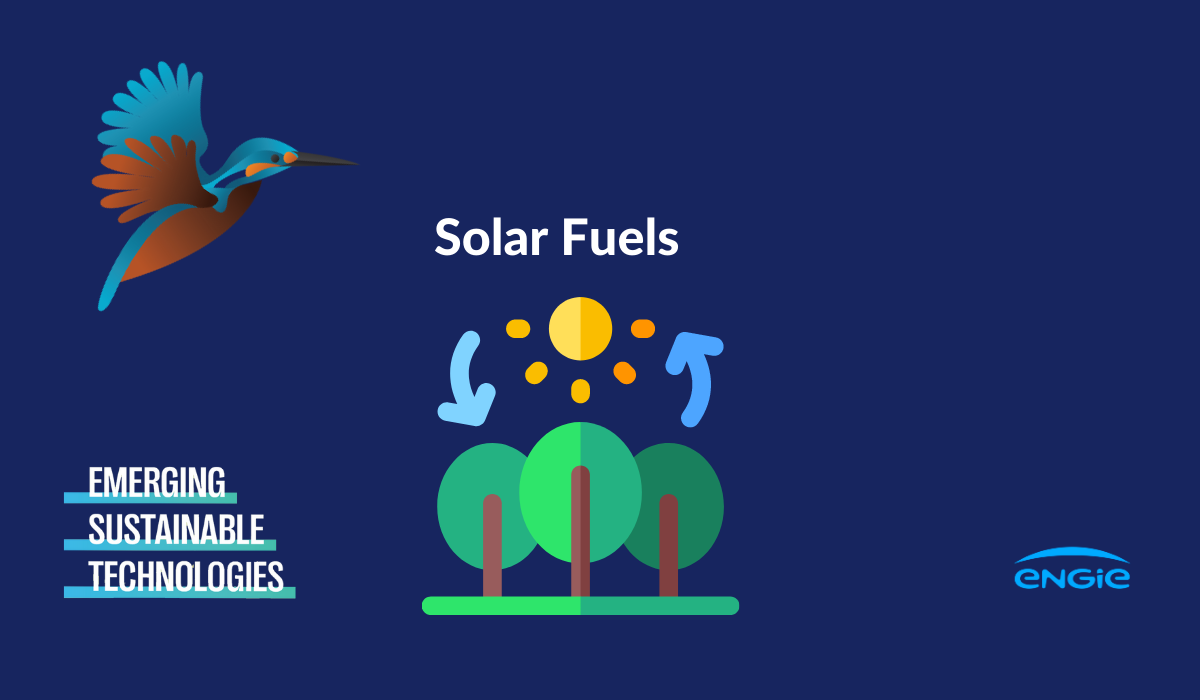Solar fuels are fuels made from common substances like water and carbon dioxide using the energy of sunlight. Solar energy can be used through heat harvesting or electrical charge generation.”
It is a question of inducing a chemical synthesis – copied from natural photosynthesis – by light.
Photosynthesis efficiently captures solar energy, but its subsequent conversion into chemical energy in the form of biomass is limited in terms of efficiency in the range between 1 to 4%. Re-routing of photosynthetic electron transport and reducing power directly into desired pathways offers a sustainable production of high-value products.

Some solar fuels
- Hydrogen from H2O
- Syngas,methane/methanol, formic acid, C2 + liquid fuelsfrom CO2 / CO2 + H2O
3 main solar splitting processes are used to produce H2.
Photovoltaicelectrochemical (PV-EC) system ; Mature technology
Photoelectrochemical (PEC) system ; in development
Photocatalytic (PC) particulate system ; Innovation
Why do we need solar fuels?
Even if large scale electrification is part of most decarbonization roadmaps, deployment of solar fuels technologies will still be needed for long-term storage and long-distance transport of intermittent solar energy into molecules.
Indeed, world distribution of solar radiation does not match the population density distribution. Fuels become necessary for storage and long-distance transport of the harvested energy.
Work in progress
Electrochemical CO2 reduction technologies are not yet available on the market: while few large technology providers dominate the market on high temperature electrolysis, a surge of start-ups and R&D centers are positioning themselves on low-temperature electrolysis.
With a much lower TRL, CO2-based PEC solar fuels are today mainly developed at prototype scale by academics even if growing interest is observed from some industrial players, already positioned in H2 production by PE.
ENGIE Research & Innovation works on solar-assisted electrolysis of hydrogen technology that allows the reduction of electrical cost of hydrogen by direct use of sunlight. It is the Nano H2 project which offers a certain number of technological breakthroughs:
• High scalability: panel design allows to precisely scale production capacity to customer needs.
• High modularity: adding and removing panels to adjust the production capacity to customer needs.
• Ease production of green hydrogen: green hydrogen production does not rely only on electrical mix.
• Steppingstone: Engineering solutions developed can be applied to fully photocatalytic systems once their durability and efficiency reaches industrial standards.
Today, solar fuels solution are trusted by a European consortium while an increasing number of industrial players launch PEC H2 production.


